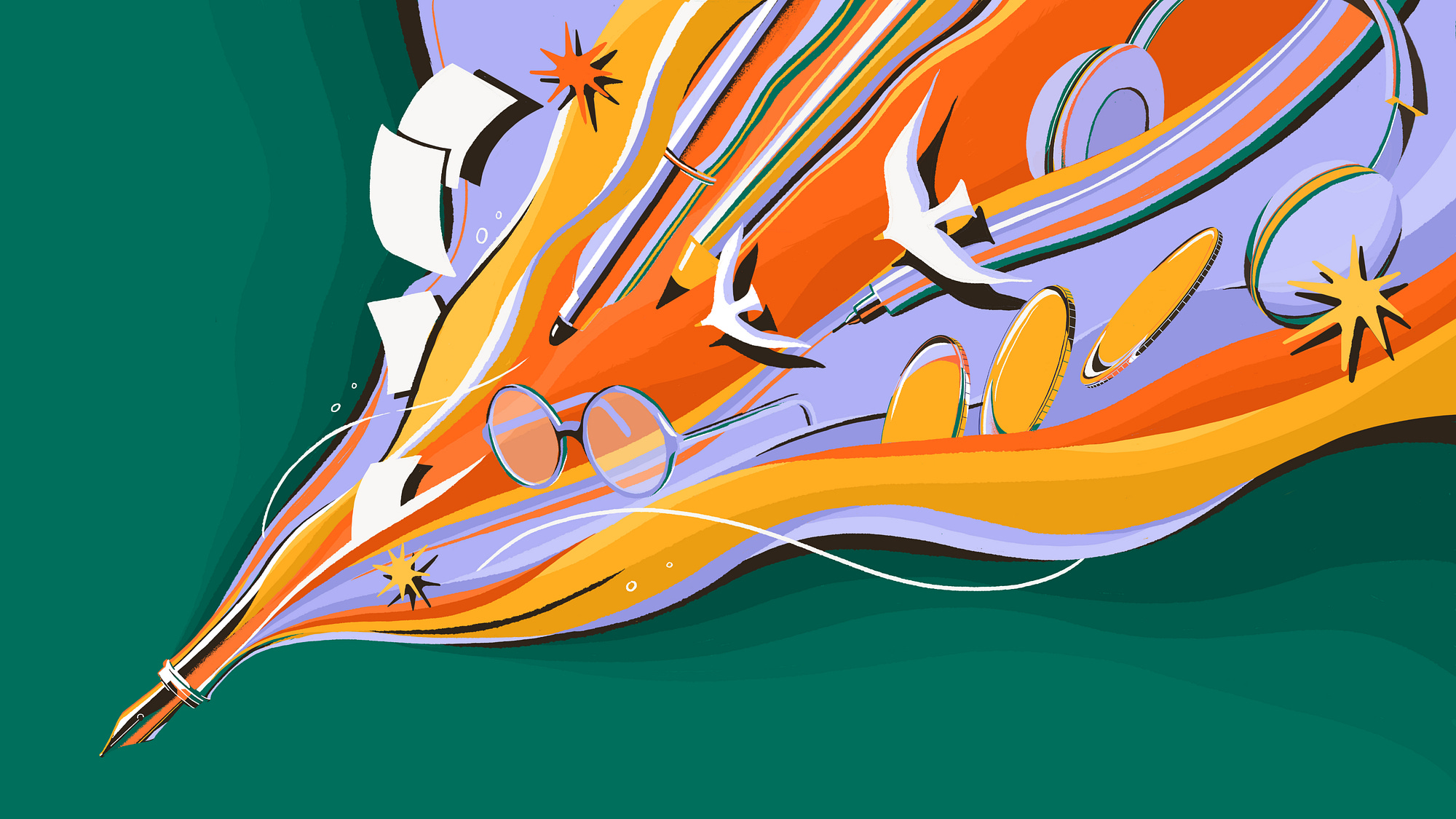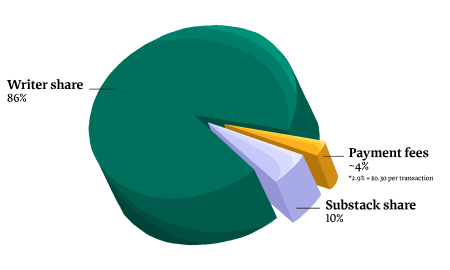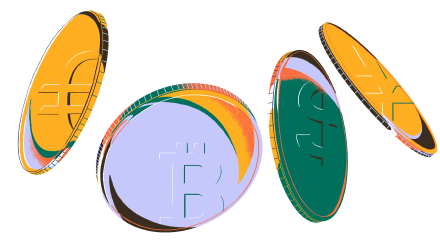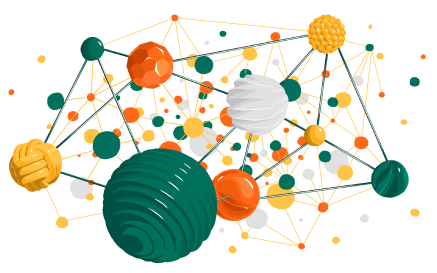
Building a new economic engine for culture
We started Substack because we believe that what you read matters and that good writing is valuable – and as the platform has evolved, we've come to expand that view to include all forms of cultural work. On Substack, writers and creators can publish their work and make money from paid subscriptions while readers can directly support the work that they deeply value.
Substack has been called a media company, a newsletter platform, and a social network, but none of those really fit. Substack is something new: a subscription network. When readers pay writers directly, writers can focus on doing the work they care about most. A few hundred paid subscribers can support a livelihood. A few thousand makes it lucrative.
Today Substack's subscription network encompasses more than 50 million active subscriptions, including 5 million paid subscriptions. Some of the world's most celebrated writers are here —Margaret Atwood, George Saunders, and Kareem Abdul-Jabbar, to name a few—and they have been joined by a new generation of writers who are building their livelihoods and communities on Substack.
As Substack grows to accommodate more writers, podcasters, videomakers, musicians, scientists, and culture-makers of all kinds, we believe that together we can build a new economic engine for culture. We think the internet's powers, married to the right business model, can be harnessed to build the most valuable media economy the world has ever known—an economy where value is measured not only in dollars but also in quality, in good-faith discourse, and in creating an internet that celebrates and supports humanity.
“I had no idea my Substack would grow like this. I am getting hundreds of new subscribers every day and it has no sign of slowing down. The reason it’s growing so fast is because almost 250 other Substackers are recommending it. This is what makes Substack different from the competitive nature of social media.”
How the Substack model works

We only make money when writers make money.
When a reader pays for a subscription on Substack, an average of 86% of the money goes to the writer and the remainder covers our revenue share and Stripe’s payment processor fees. Since we only make money when publishers make money, our interests remain aligned with those of writers and readers. To date, readers have paid writers hundreds of millions of dollars through Substack.

The subscription model enables independence.
Writers and creators need to be loyal only to their subscribers, not to advertisers, and can focus on quality more than inundation. A few hundred paid subscribers will support a writer’s livelihood. A few thousand makes it lucrative. (The top 10 publishers collectively earn more than $25 million annually.)
Estimate your earnings

Our network helps writers grow and readers discover new writing.
More than 40% of all subscriptions and 15% of paid subscriptions on the platform come directly from the Substack network. This is happening because there are tens of millions of people active on Substack every week, they understand what it means to subscribe to a writer, and they are open to discovering new writing to fall in love with.
Learn more
Substack's principles
With every product and feature we build, we will stay true to the following principles:
Great work is valuable and deserves to be rewarded with money.
Publishers should have a way to make a living, or even a fortune, from doing the work they believe in. Money is the fuel that makes our entire engine work, and it’s a healthier, more honest metric than “eyeballs” or engagement.
The people have the power.
Publishers own their content and relationship with their subscribers and have complete editorial control. Readers and consumers choose who they enter subscription relationships with.
A free press and free speech are fundamental to a trustworthy media system.
We take a hands-off approach to content moderation and instead support community moderation, where publishers set their own terms of engagement for their community, and readers choose which communities suit them.
We help readers take back their mind
On Substack, you are the customer. We want to help you be intentional in determining your media diet. We don’t seek to trap you in an attention game that can never be won, and instead we want to help you find and spend time with work that you deeply value.
Don't just take it from us...
“I’m happy to settle in a place that values writing and conversation. I feel like it’s giving my voice the home it had been missing for so many years.”
The deeper I get into my career as an author, the more the urge to write feels like part of the very fibre of my being. I want to not be on social media, battling algorithms and acting as an aftercare manager for a distracted perception of my work in the midst of a blizzard of meaningless noise. Substack instantly gave me hope that I might be able to make the change I’d been desiring so much. Almost ten months down the line, I’ve not regretted it one bit.
Tom Cox
Over 13,000 subscribers
I have never before written for such an engaged and present audience, and it’s been kind of a revelation. I have always been suspicious of people who say they “enjoy” writing . . . but I enjoy writing this newsletter?
Mason Currey
Over 17,000 subscribers
Start a Substack. Best thing I ever did. No more living in fear that the next layoffs will hit you. No more dealing with terrible corporate people who have no idea what doing something creative for a living is like.
Molly Knight
Thousands of paid subscribers
My Substack began as a way for me to break free of the tumultuous and layoff-prone world of media and to start something of my very own, complete with full editorial freedom. Since then, what began as a simple newsletter has grown into a full-fledged community of readers and fellow writers alike. Thanks to the company's ever-updating list of writer-focused products, I've connected with a much larger audience than I'd have otherwise been able to reach on my own.
Parker Molloy
Over 29,000 subscribers
My Substack has been up and running for a year now, and it’s been one of the best decisions I've made. I’ve been able to develop my skills, connect with a community of readers, and most importantly, it’s given me the financial freedom to focus on what I love doing.
Tara Henley
Over 11,000 subscribers
In the press

Substack vs. The Giants
Read more

"My Own Little Fiefdom": Why Some Famous Novelists Are All About Substack
Read more

From me to your inbox: 33 of the best Substack newsletters
Read more

‘I make more money from my Substack column than I ever have from any media column I’ve ever written’ – how the publishing platform disrupted the industry
Read more

Is Substack the future of media?
Read more

The Writer Changing How London Thinks About Its Food
Read more

Kareem Abdul-Jabbar speaks his truth on Substack.
Read more

The Women's Magazines of 2023 Are in a Facebook Group and Your Inbox
Read more

